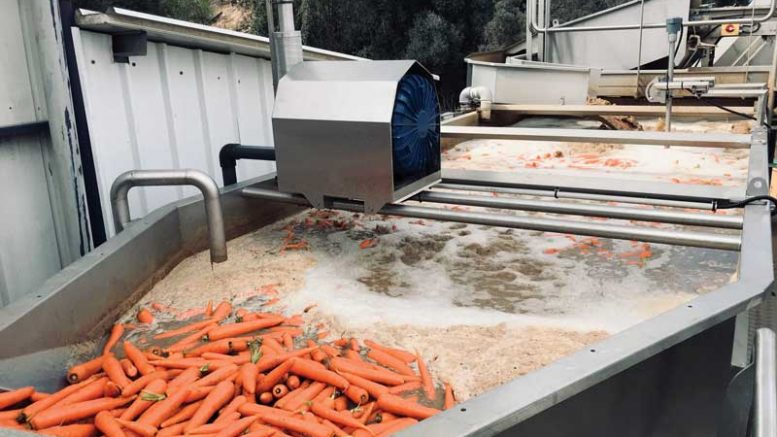Recycling Water in Carrot Pack Houses
By Udi Leshem, Co-founder, Aqua HD
Aqua HD has designed a water treatment technology involving particle separation that allows pack houses to recycle their water.
In pack houses, water is used extensively during the packaging process for uses such as cleaning and transporting produce throughout the packing operation. Pack houses can incur high costs for both water usage and wastewater discharge tariffs. This can limit pack house operations due to shortages of fresh water as well as land for wastewater discharge. This is especially true for root vegetables pack houses where high solids are removed from the vegetables and transferred to the water stream. As a result, wastewater generated in pack houses is characterized by a high presence of solids, creating high turbidity and Total Suspended Solids (TSS) levels, which result in high costs associated with removing the particles from the wastewater stream.
Many pack houses are looking to decrease their water usage and reduce their wastewater tariff costs through the reuse of their process water. When handling these water streams, solids separation becomes the main challenge in the treatment process. Particles in root vegetables pack houses are very small; over 90 percent of the particles are in the range of 2-50 microns, which creates a challenge when considering any type of separation or filtration.
Traditionally, solids separation processes in pack houses use gravitational separation (clarifiers). While effective, clarifiers require a big footprint and are relatively expensive. While processes that remove particles using centrifugal force do exist in the market as an alternative to the clarification process (e.g. Hydrocyclone), they are extremely limited in the size of particles they can separate (larger than 70 um) and the density (larger than 1.9 g/cc( and are mainly used for the initial large sand separation (less than 2 percent of the solids). The high sheer forces created in the Hydrocyclone will prevent the use of coagulation and flocculation processes since the flocs will be broken and, thus, the operation will be ineffective.

New Technology
The recently developed hydrodynamic separator called Natica, developed by Aqua HD, is free from the limitations of the conventional solid separation processes. The Natica works by creating centripetal forces to separate particles under low pressure (1bar).
In the Natica, the water flows through a dedicated circular structure (Fig. 1). The pass of the water in the circular structure allows the creation of high centrifugal forces (6-8 G) under low pressure. Due to the high centrifugal forces, particles become concentrated in the outer perimeter of the separator. Owing to the laminar flow, particles stay in the outer perimeter layer and do not mix with the clean water in the inside of the separator. A specially designed outlet structure separates the stream rich in particles (near the outer perimeter) and that of the clean water. Particles that have been removed from the water will go through a further sludge thickening and dewatering treatment where the water will be sent to the head of the process.

Case Study
Due to high wastewater tariffs costs, Aqua HD recently installed a water treatment and recycling system in a carrot pack house in Israel. In the carrot pack house, water was continuously discharged from the washer (few seconds every few minutes) to a designated pit and was recycled to the head of the washer to use in produce conveying. When solids loading in the pit became too high (every few days), water was discharged from the pit and fresh water was filled in.
The Aqua HD system was installed next to the pit and was continuously pumping water from the pit, cleaning it and sending the clean water from the pit to the head of the washer. This configuration allowed for continued operation of the pit without the need for the frequent water replacements in the pit that resulted in high flows of highly loaded wastewater to the sewer lines.
In the carrot pack house, the installation was done in a limited footprint (inside the existing pack house) and without interfering with the daily pack house operation.
As seen in Fig. 2, the Aqua HD separation system was able to achieve very high removal efficiency (over 90 percent) and produce high quality water regardless of changing inlet water conditions.
The system compactness and modularity make the hydrodynamic separator a very suitable solution for pack houses that want to handle their water stream either for discharge to the sewer lines or to the environment or want to recycle their water.


